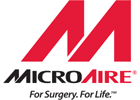MicroAire Surgical Instruments and Arthrex have announced that they have entered an agreement to settle a suit accusing Arthrex of patent infringement and breach of contract. At issue was the patented technology that MicroAire owns for minimally invasive treatment of carpal tunnel syndrome.
Judge Norman K. Moon of the US District Court for the Western District of Virginia approved the agreement on Thursday, 28 October without disclosing specific terms. The two companies issued this joint statement expressing their commitment to the safety and efficacy of endoscopic carpal tunnel release, also known as ECTR.
As a result of the agreement, MicroAire will now license its patented ECTR technology to Arthrex for an undisclosed fee and both companies will maintain MicroAire’s practice of requiring surgeon training for this procedure.
Alan Connor, MicroAire’s vice president of operations, expressed his satisfaction with the settlement, noting the emphasis on patient safety and surgeon training. “MicroAire believes, as does Arthrex, that the endoscopic method of carpal tunnel release is a safe method that provides measurable patient benefits including a smaller scar, less pain and a faster recovery.”
Anthony Cho, legal counsel for Arthrex, said: “Both Arthrex and MicroAire worked together in good faith to settle their differences amicably and should be commended for their efforts.”
MicroAire’s patented endoscopic treatment of carpal tunnel syndrome is a minimally invasive alternative to open-hand surgery. Endoscopy enables visualization of the surgical procedure on a video monitor through the use of a tiny camera inserted into a small incision in the crease of the patient’s wrist. The treatment has been practiced for over 20 years and its safety and efficacy are supported by an impressive body of clinical data, including a randomized, prospective study involving more than 1,000 patients in 63 surgery centers. (Agee, JM et al. ‘Endoscopic Release of the Carpal Tunnel: A Randomized Prospective Multicenter Study’. Journal of Hand Surgery. 1992; 17(6):987-995.)

